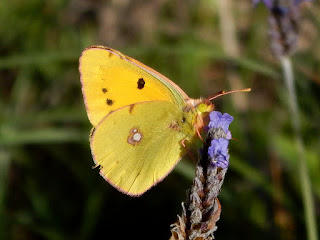During my stay I managed to grab a few hours at the brilliant little reserve on the western edge of Malaga at the mouth of the Rio Guadahorce. Winter birding reduces the amount of birds on view though it was still well worth a visit.
 |
| White-headed Duck, Pochard and Black-winged Stilt. |
My walk from the train station at Plaza Mayor was uneventful with just the local Jackdaws to report, this area used to be productive but construction projects have destroyed much of the habitat. Arriving at the reserve I was greeted by a flock of Crag Martins feeding over the river, a scan through them produced sightings of half a dozen House Martins and a few Swallows which were an unexpected bonus. Both Fan-tailed and Cetti's Warblers could be heard and so too Crested Lark.
 |
| Greenshank and Sanderling. |
A scan from the screen at the first lagoon provided the hope for White-headed Ducks with two drakes at the far end in company with some Pochards. The Laguna Grande was packed with birds though they were frequently put into panicked flight by one of two Booted Eagles. Other raptors annoying the water fowl were an Osprey and a female Marsh Harrier. Commonest of the duck were Shovellers, a triple figure count were present. Smaller quantities of Teal and Mallard were seen while another White-headed was found. Looking through the ducks provided sightings of a few Black-necked Grebes and several Dabchicks. Two Spoonbills were sleeping as usual and other leggy birds included Cattle Egret and Grey Heron. Commonest wader was Black-winged Stilt with their constant calling somewhat irritating. Joining them were a single Avocet, a Greenshank, a Sanderling and a couple of Dunlins.
 |
| Cattle Egret and Spoonbills. |
Checking some of the other pools produced little and a look at the sea did likewise. By now the sun was getting pretty warm and insects were beginning to appear. Clouded Yellows and whites including Large were on the wing though another insect provided some initial frustration followed by joy. While peering through one of the windows of a hide a large and pale hawker dragonfly flitted past, almost certainly given the time of year and colour a Vagrant Emperor but unconfirmed. Feeling more than a little annoyed at missing out on a new tick I returned to the Laguna Grande for one last peek. The Spoonbill duo was now a trio and a couple of Black-tailed Godwits had arrived but things were other wise unchanged. Walking back I saw another large dragonfly though this one lingered long enough to identify if not photograph - my first Vagrant Emperor!. Through the bins I could see the yellow green of the lower eyes and thorax sides as well as the blue on the abdomen contrasting with the sandy colour of the rest of the insect. I really didn't expect to see a dragonfly anywhere in February but presume that this was a recently arrived migrant from Africa. All in all a fine way to conclude my visit.


 |
| Raptor record shots, Booted eagle, Marsh Harrier and Osprey. |
There was still time for another insect to add a further late highlight to my day as at least one and perhaps two Monarch Butterflies were seen at Plaza Mayor train station. This was the first time for me in Europe and I even managed a distant record shot. Two new insects in February, can't wait for the season to begin in the UK.
 |
| Clouded Yellow and Monarch. |


















































